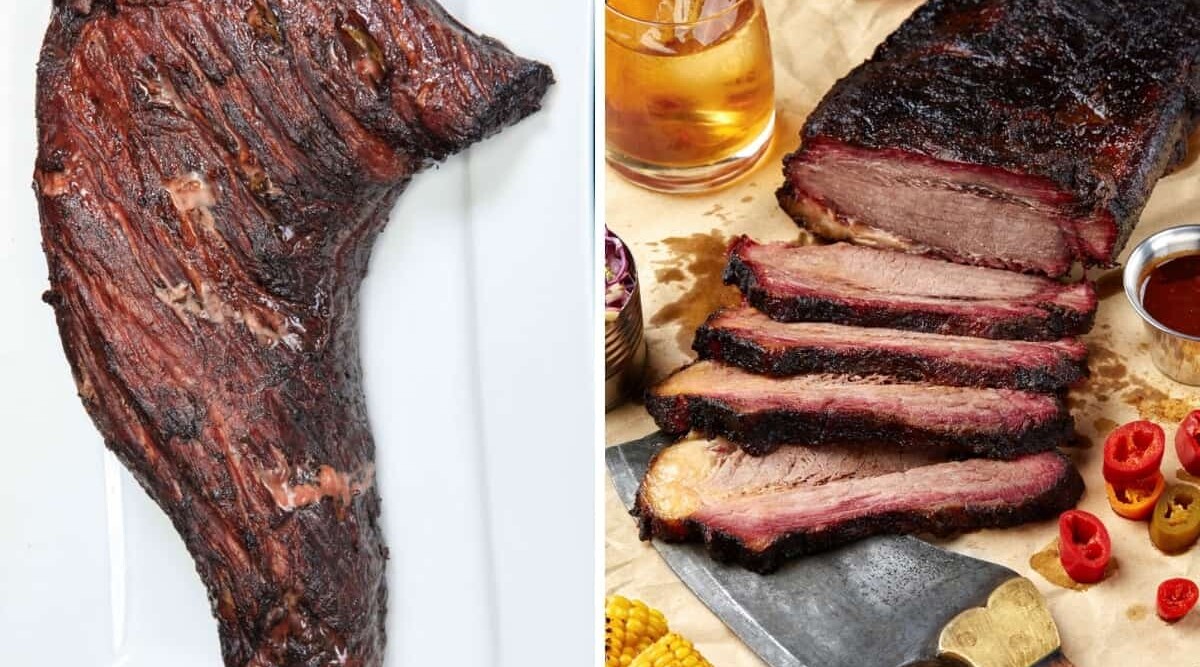
This comprehensive comparison of tri-tip vs brisket will tell you all you need to know about the differences between these two legendary cuts of beef.
Because when it comes down to it, how can you decide which is right for you and your plate unless you know the intricacies and differences between them? Well, we’re going to sort that out here and now.
Tri-tip is a lean, flavorful cut ideal for hot and fast, quick grilling, favored for its balance of taste and leanness. Brisket, known for its rich flavor, requires low and slow cooking over many hours to achieve the perfect tenderness, appealing to enthusiasts of hearty, slow-cooked meals.
But there’s to it than just this. There are differences in size, fat content, where the cuts come from on the cow, and other names they go by. Plus, you need to prepare them and cook them differently on your grill or smoker.
So stay with me to learn all this and more because — like the cuts themselves — this is going to be epic.
Jump to:
Quick Comparison Table
For a bottom line up front quick comparison, here are the main differences between these two cuts:
| Factor | Tri-Tip | Brisket |
|---|---|---|
| Average Size and Weight | 1.5 to 2.5 lbs (0.68 to 1.13 kg) | 8 to 20 lbs (3.6 to 9 kg) |
| Average Servings Per Cut | 4 to 6 servings | 10 to 20 servings |
| Fat Content | Lower fat content compared to brisket; has a thin layer of fat on one side | Higher fat content, especially the "point" cut which is fattier than the "flat" cut |
| Tenderness | Tender if not overcooked; benefits from marinating | Very tender when cooked slowly and properly due to connective tissue breakdown |
| Flavor | Rich beef flavor, slightly less intense than brisket | Deep, rich beef flavor, enhanced by fat and slow cooking |
| Texture | Firm texture that's juicy when cooked correctly | Soft, almost buttery texture when cooked slowly |
| Location on Cow | Bottom sirloin | Breast, lower chest area |
| Preferred Cooking Method | Grilling, broiling, or roasting | Slow cooking methods like smoking, braising, or slow roasting |
| Ease of Cooking | Relatively easy to cook, with less cooking time required | Requires more attention and longer cooking times to achieve tenderness |
| Nutritional Information | (Per 4 oz / 1/4 pound) Approx. 239 calories, 29g protein, 12.5g fat (values can vary) | (Per 4 oz / 1/4 pound) Approx. 328 calories, 32g protein, 21g fat (values can vary) |
| Price | Generally less expensive than brisket | Can be more expensive, especially for prime cuts |
And now, let’s dive a little deeper.
Tri-Tip Vs Brisket Detailed Comparison
Before we discuss each cut individually, it’s time for them to go head to head. Or, tip to point.
Cooking Methods — Is One Easier to Cook than the Other?
This one isn’t even a contest; tri-tip is far easier to cook than brisket. Both can be a bit dodgy in that they’re tough when done wrong. Tri-tip is a bit more forgiving thanks to the extra marbling, though. Also, because of its size, you’ll spend far less time tending to it. Plus, tri-tip requires less prep and less resting.
Is One Better for Smoking Than the Other?
We’ve established that tri-tip is easier to smoke than brisket. However, to cook a delicious brisket is the ultimate goal of many backyard chefs. It’s certainly a more intense smoking experience, and it takes time and care. For that reason, it can be especially rewarding.
By the same token, though, it can tear your soul out if a full day of smoking yields an inedible hunk of dried-up cow chest. (In my head, I can hear Inigo Montoya in The Princess Bride saying, “Fezzik, listen! Do you hear? That is the sound of ultimate suffering.”)
So, the answer depends on your definition of “better.” It certainly seems that more people attempt a brisket, but that may be partially due to its familiarity.
Difference in Tenderness
Before cooking a brisket low ’n’ slow, it’s incredibly tough and chewy. Tri-tip is inherently more tender, but it’s not up there with a top sirloin. You’d never guess they could both be rendered succulent and delicious with just heat and time.
While both will come out tender if done right, tri-tip gets the edge in this category.
Which is More Flavorful?
Both brisket and tri-tip possess a strong, naturally beefy flavor. It’s perhaps a bit stronger in the brisket, but it’s the way brisket cooks that makes it the standout in the taste category. If you succeed in imparting a dark and delicious bark, there’s just nothing else quite like it. In an ideal world, where both cuts turn out perfect, brisket is the flavor champion.
Which is USUALLY bigger?
Although both cuts are often sold pre-divided — briskets are frequently divided into two pieces, and tri-tip may end up as multiple steaks — looking at the whole cuts, both are relatively large.
But, there’s really no contest here. A brisket may weigh as much as 20 pounds and average around 12. An average tri-tip is about 2 pounds, though an untrimmed beast might make 5 pounds.
Which is Better — Brisket or Tri-Tip?
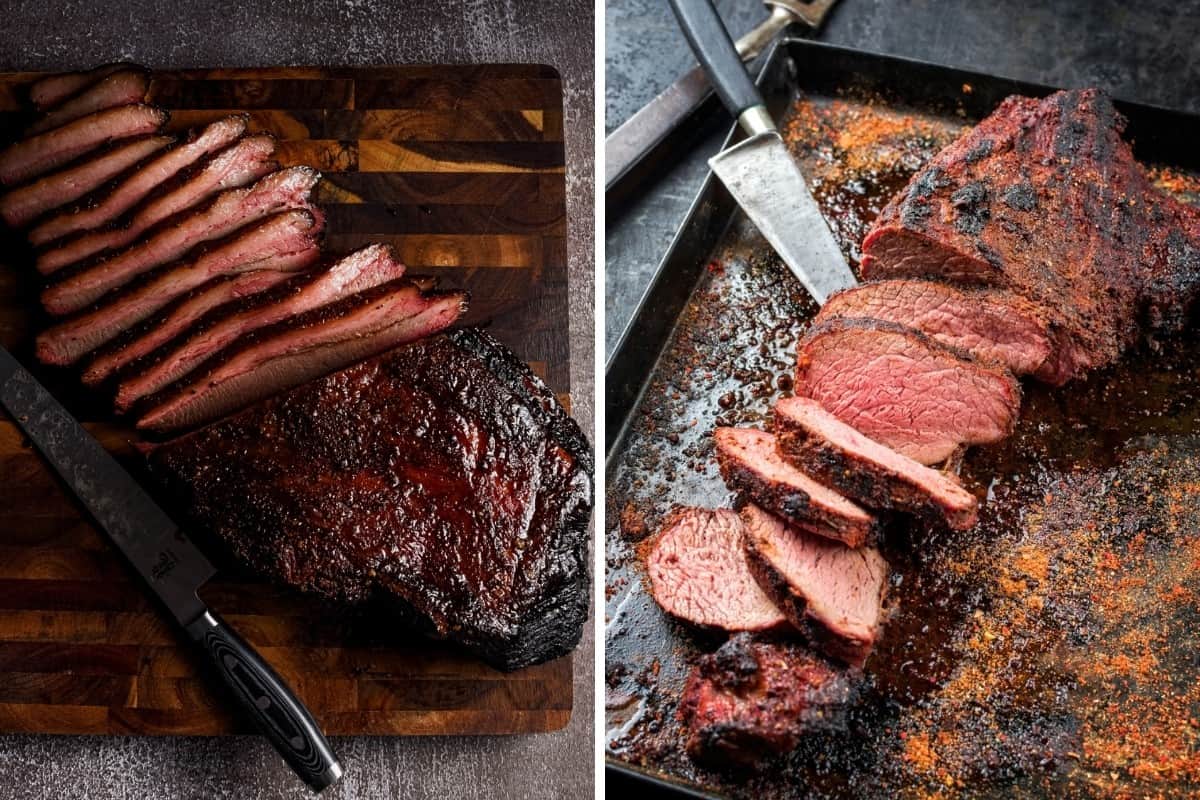
This isn’t an easy choice; both cuts have a lot going for them, and each has its unique pros and cons.
The tri-tip is probably better for a beginner, simply based on the ease of preparation and cooking, and the highly satisfactory results. It’s cost-effective, too, especially compared to most steaks. On a per-pound basis, it’s more expensive than brisket, but they’re much smaller in size, so your bill will be correspondingly smaller, too.
But, the grilling and smoking journey is one of constant self-improvement. Smoking a killer brisket is a noble pursuit, one almost all of us in the hobby (or profession) want to take on. It’s like chasing the Holy Grail, only without clunky armor or killer rabbits.
Considering the superior taste, the lower cost per serving, and the sheer pride that accompanies it, the brisket takes the crown in this beefy battle royale.
When Would I Pick One Over the Other?
Choosing between tri-tip and brisket isn’t easy for me because I appreciate both for different reasons.
Tri-tip is more my weekday warrior; it cooks quickly and still satisfies that craving for smoky, grilled flavor. It’s perfect for a quick dinner after work or if I’m only feeding a few people and don’t want to spend the best part of a whole day planning, preparing, and smoking a brisket.
Brisket, however, is my weekend project. There’s something incredibly rewarding about the long, slow process of smoking a brisket for half a day or more. It’s not just about the end result, which is always mouthwateringly tender, but also about enjoying the process itself.
And because I’m confident with my ability to deliver a yummy brisket, it’s my choice for feeding a big crowd, especially one I want to impress. Not only does it look great, but it’s also a more efficient choice for feeding many people thanks to its size.
Tri-Tip Deep Dive
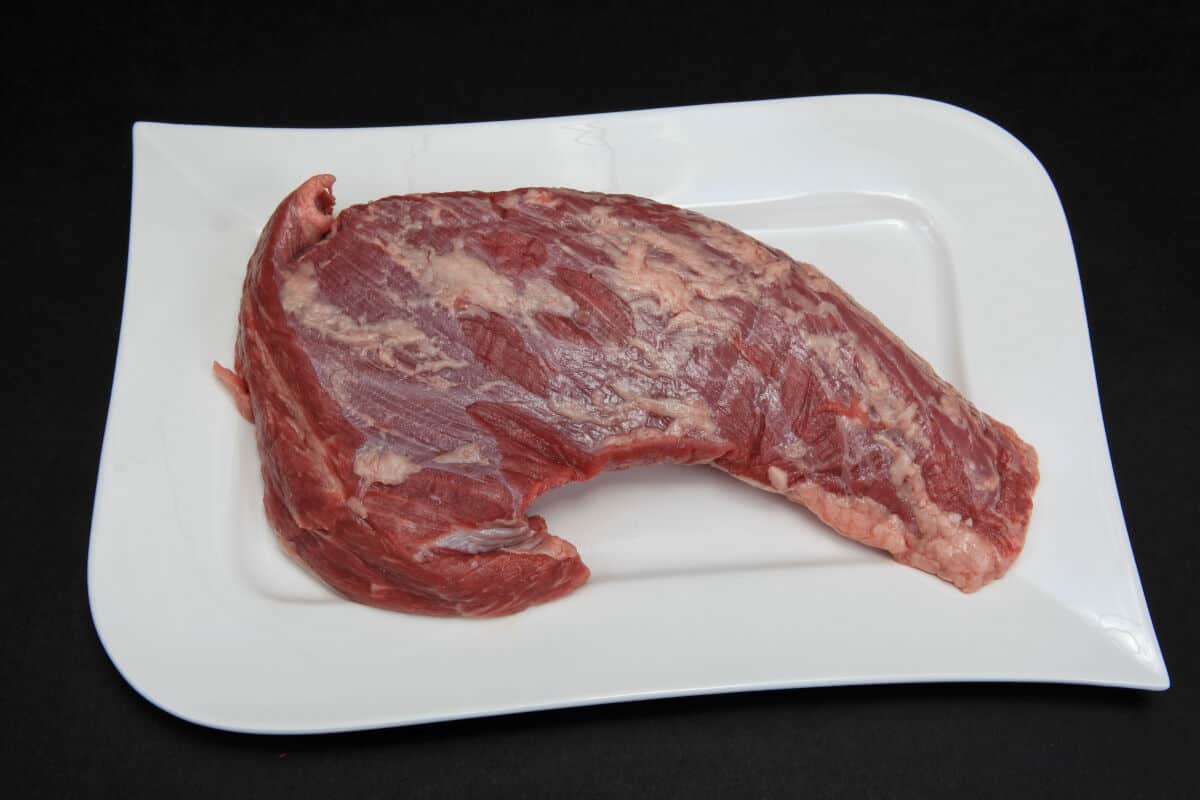
“People across North America are discovering that tri-tip is a mouth-watering cross between a steak and a roast that’s perfect for grilling. It’s even been hailed as ‘poor man’s prime rib.’” — Steven Raichlen
So what is tri-tip? It is one of those rare meat cuts (as in uncommon, not seared on the outside and red in the middle) whose origins we can pinpoint with high accuracy. Apparently, a butcher at a Southern California grocery store decided to try and roast a piece of meat cut from the sirloin, an area usually destined for the meat grinder. The year was 1952 — probably.
While likely not the first person to cook a tri-tip, Bob is generally credited as the first person to bring it to the masses. (As with all cuts, others lay claim to that honor, as well, of course.) Having said that, tri-tip has never joined the top ranks of the most popular cuts of beef. It remains popular in SoCal, though, and is often smoked over red oak and served with salsa and garlic bread.
The tri-tip’s other names are: Newport steak, Triangle steak, Bottom sirloin butt, the California cut, and Santa Maria steak from its purported place of origin in Santa Maria, California.
Tri-tip is very tender and easy to chew, but only if you don’t overcook it and do slice it the right way. Slicing it thin and against the grain yields melt-in-your-mouth morsels worthy of the best deli sandwich. We’ll talk more about slicing tri-tip later.
Where on the Cow does Tri-Tip Come From?
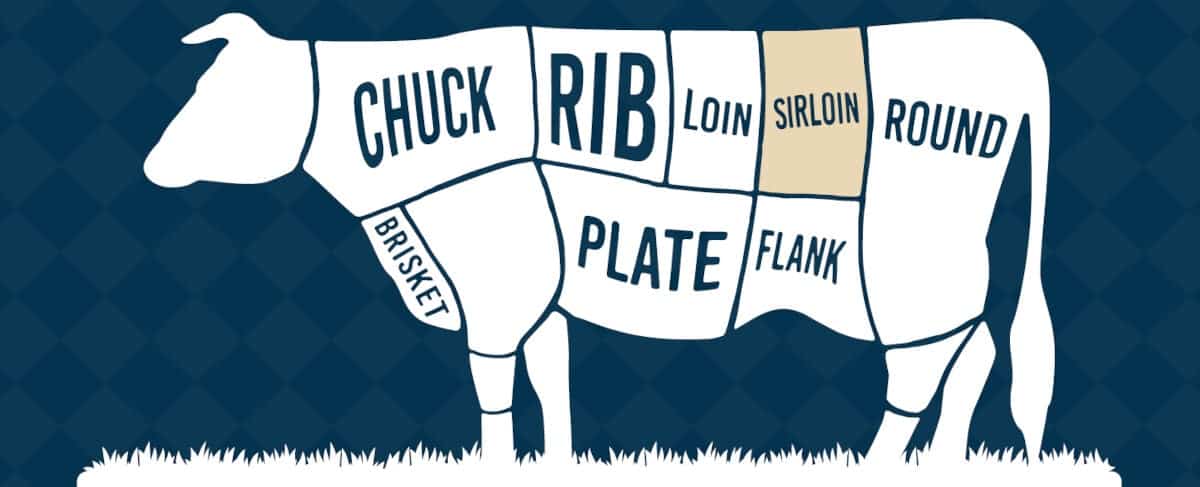
The tri-tip is cut from the bottom sirloin, a sub-primal section of the larger sirloin primal. The sirloin is located near the back end of the cow, just in front of the round primal (aka the rear of the steer).
It’s roughly triangular in shape, sometimes looking like a boomerang that overdid it during the holidays and sometimes like a pudgy arrowhead.
Typically, there is moderate to heavy marbling running towards one point. However, the grain strangely runs in two different directions.
How Much Meat and Fat does Tri-Tip Contain?
Despite all the marbling, tri-tip is classified as a lean cut of beef. An untrimmed tri-tip comes with a fat cap, but you’ll probably want to remove that, anyway. There is a lot of meat on your cooked tri-tip and no bone.
Nutritional Information per 4 oz (1/4 pound)
| Nutrition | Total Amount | % Daily Value (based on 2000 calories/day) |
|---|---|---|
| Calories | 239 | 12% |
| Total Fat | 12.5 g | 19% |
| Cholesterol | 95 mg | 32% |
| Sodium | 60 mg | 3% |
| Protein | 29 g | |
| Calcium | 1.5% | |
| Iron | 4.3 mg | 10.5% |
Portion Size: How Much Tri-Tip Per Person?
Because it’s lean, tri-tip is reasonably low in calories. How much you serve to each person, though, will depend on how it’s served. For example, if you’re slicing it thin for a sandwich on thick, carb-tastic bread, you might want to keep it down to 3 – 6 ounces. If you’re serving it cut into steaks, 8 ounces is a safe bet.
How to Prepare Tri-Tip for Grilling or Smoking
As mentioned earlier, an untrimmed tri-tip should have its fat cap carefully sliced off. However, this cut is usually bought pre-trimmed leaving you with nothing to do but season as desired. A tri-tip benefits enormously from a simple rub of household spices like salt, pepper, garlic, and oregano. It’s also ideal for marinading overnight, even in plain old olive oil.
A few more words on that fat cap: the reason for removing it is that the rendering fat will drip down into your grill and cause potentially catastrophic flare-ups.
But, if you’re using a smoker, and you’ve got a drip pan, you could certainly leave it on, if you like, for extra flavor and moisture. Just be sure to place the meat on the grate with the fat side facing up and away from the heat source to allow better smoke penetration and even cooking.
How to Cook Tri-Tip
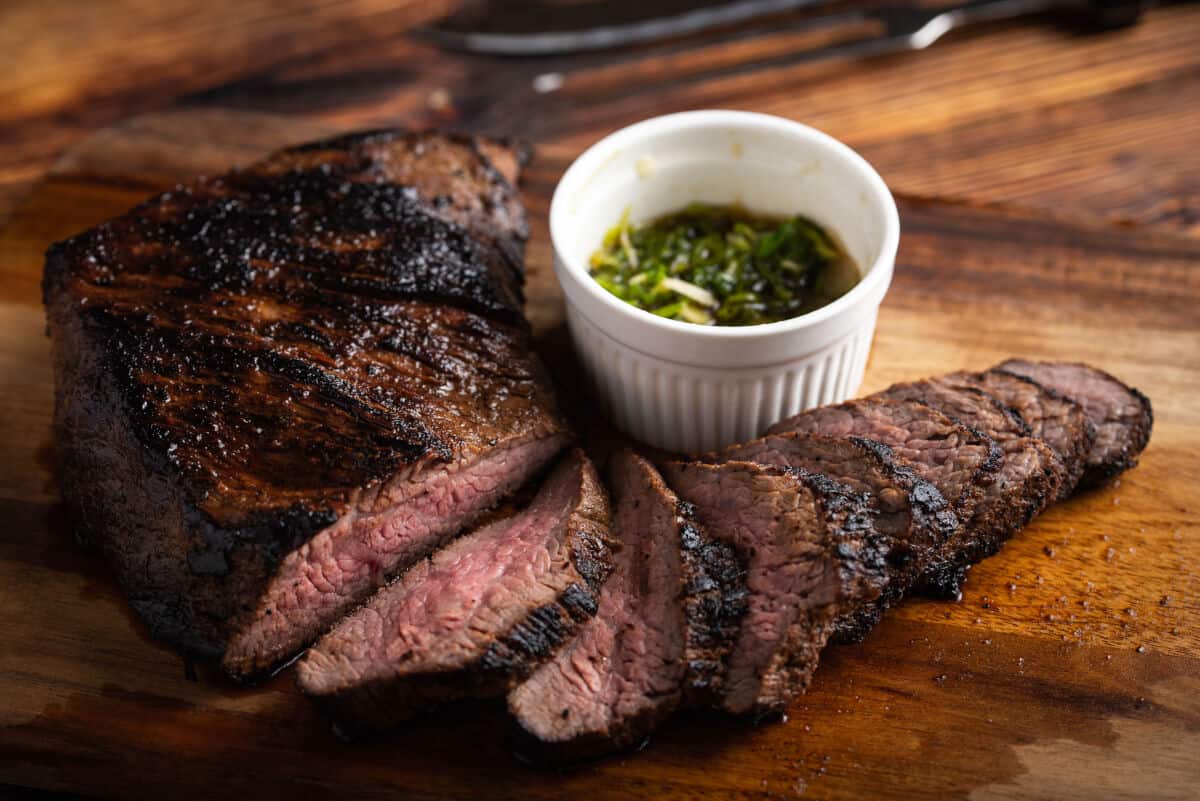
Tri-tip is an unusual cut in that you have several options in terms of cooking style.
Thanks to its size, you can smoke tri-tip low ’n’ slow until it’s nice and tender; this is the preferred method for many chefs. Your best bet is to set your smoker between 225F and 250F and smoke for about 30 minutes per-pound. Aim for medium-rare at the thickest point of the cut. You’ll end up with something more like medium at the thin spots, but it’s still delicious. If you can get your hands on red oak, that’s the most “authentic” choice, but any oak will do.
There’s no need to wrap your tri-tip during the smoke session, but many chefs choose to wrap theirs in foil while it rests. This allows the juices a chance to settle down, and you’ll have less leakage when it’s time to carve.
Aim for rare to medium-rare for the best tenderness and taste. That means an internal target temperature of 135F to 140F.
On the other hand, you could also give it a sear, like a steak, for a few minutes and then roast it over indirect heat until it’s done. You can even spit roast it on a rotisserie. (That’s how the “first” tri-tip was prepared.) Have fun experimenting!
Where to Buy Tri-Tip Online
Snake River Farms
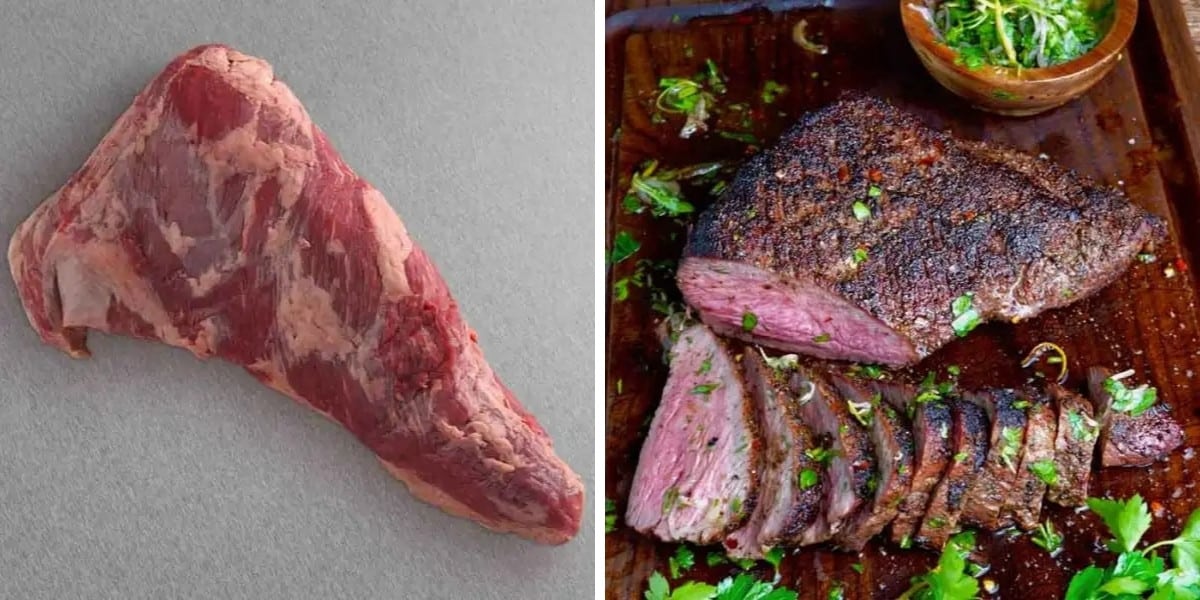
The American Wagyu Black Grade tri-tip from Snake River Farms is lean but flavorful. Their tri-tip has the rich, juicy flavour that only American Wagyu beef can provide.
It weighs on average 2.5 pounds, however because it is a natural product, the actual weight may vary by +/-.25 pound from the intended weight.
Check Price on Snake River Farms
Crowd Cow
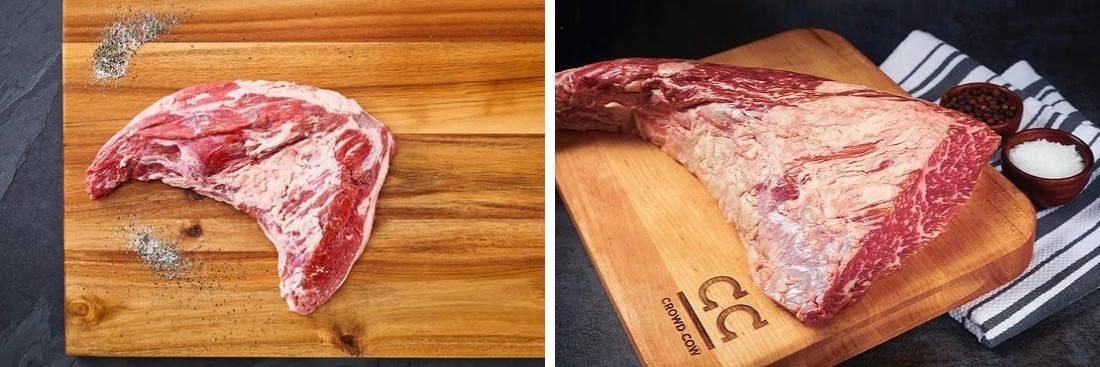
Crowd cow sells three different tri-tip roasts:
- Pasture-raised, from either certified Piedmontese cattle, or from Royal French Farms.
- 100% grass-fed, from Four Butchers, Australia
- Wagyu Cross, from Mishima Reserve
They vary in weight from 1.5 to 3 lbs, and the price ranges from $16 / lb to $26 / lb.
Brisket Deep Dive
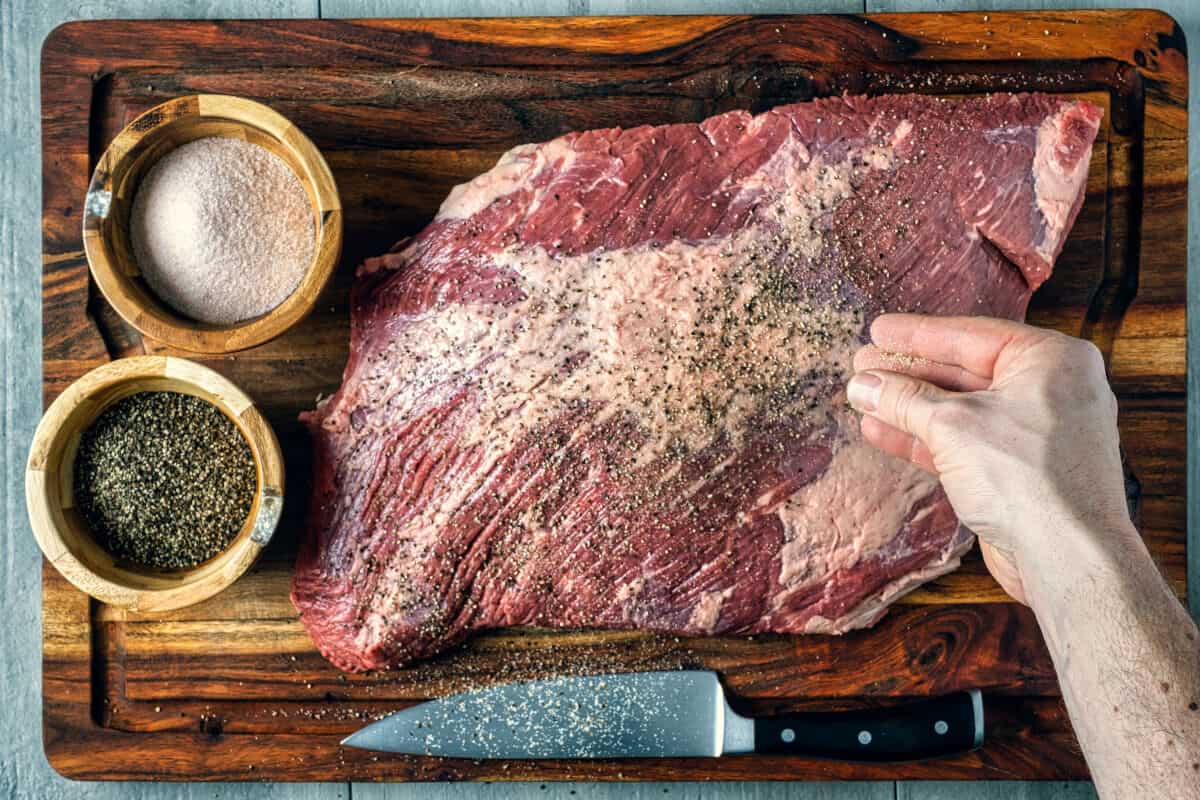
“To me, brisket is that one thing that if you cook it right… it’s delicious. But if you cook it wrong… it can be pretty bad.” — Malcolm Reed
No word of a lie, brisket is not a beginner’s cut. But, with patience, perseverance, and a few tips from someone who’s been there, you can do this.
Brisket has a long history and is enjoyed around much of the world. It is synonymous with Jewish cuisine, and it was brought to North America by European migrants. Sometime around the 1950s, it began its evolution into the poster cut for Texas-style barbecue.
Unlike many other cuts, brisket is rarely displayed under another name. As discussed in depth in our article on the brisket flat versus the point, you might find the brisket sold as two pieces, the flat and the point, or the flat and deckle point. Combined, they’re sometimes called a “packer” cut. Interestingly, corned beef and pastrami are both made with cured brisket.
Brisket is a tough cut, and as such, was traditionally inexpensive. In fact, it was often discarded. Eventually, people caught on that it’s tender and delicious when cooked low and slow. Despite its recent popularity, it’s still an economical cut.
Where on the Cow does Brisket Come From?
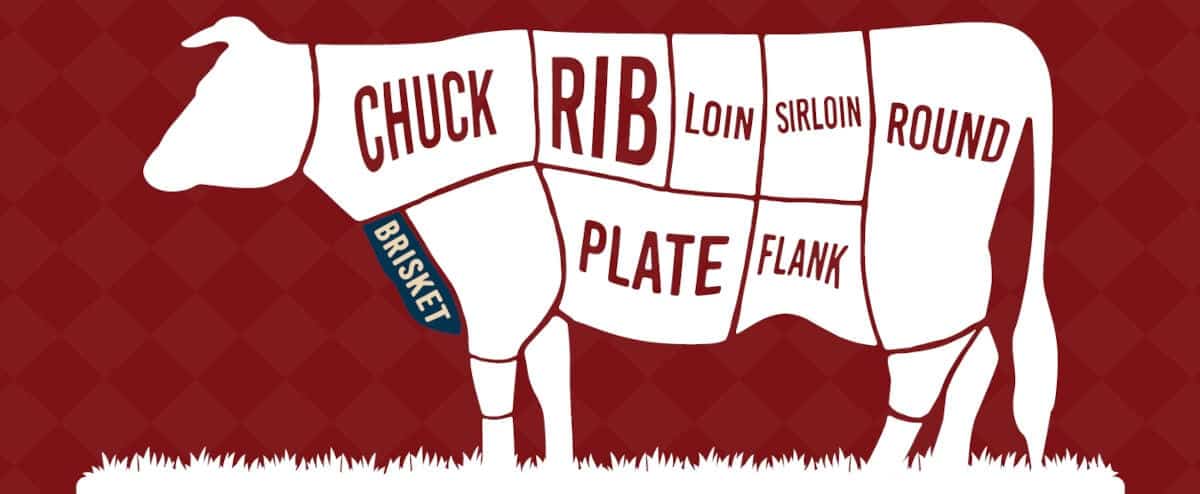
Where does brisket come from on a cow? This enormous cut of beef comes from the breast of the cow, or what you might call the pecs. Specifically, it’s located behind the foreshank and beneath the first five ribs. Despite that, brisket never comes with any bone attached.
Its shape is best described as a slab — it really doesn’t conform to any recognizable geometric shape. If you find one with the fat cap, or deckle, attached, you’ll note that one face of the brisket is almost entirely covered with a sheet of fat.
How Much Meat and Fat does Brisket Contain?
Don’t let the big, fatty deckle fool you — A brisket is a lean cut of meat. The marbling is slight to moderate, and once you’ve cut away some of the deckle (more on that later), you’ll find you’ve got mostly meat left in your hands.
Nutritional Information per 4 oz (1/4 pound)
| Nutrition | Total Amount | % Daily Value (based on 2000 calories/day) |
|---|---|---|
| Calories | 328 | 16.5% |
| Total Fat | 21 g | 33% |
| Cholesterol | 120 mg | 40% |
| Sodium | 55 mg | 2% |
| Protein | 32 g | |
| Calcium | 1% | |
| Iron | 15% |
Portion Size: How Much Brisket Per Person?
To serve brisket, you’ll slice it pretty thin and stack it up. It’s not entirely unlike bacon, really. As such, it’s easy to chow down on more brisket than is really necessary. You’ll have to gauge your crowd, but figure on 6 to 8 ounces per guest.
How to Prepare Brisket for Grilling or Smoking
First off, let’s clarify something about that header up there: you can’t “grill” a brisket because it’s too darn huge. But, you can smoke it on a grill that’s set up for smoking. Moving on.
Leave the deckle in place for the flavor and moisture, but do trim off the excess around the edges. If the deckle is overly thick, slice it down to 1/4 inch all the way across. You’ll want a sharp knife and a steady hand, but the extra work will allow the brisket to cook evenly.
You should always apply at least a dry rub of salt and pepper all over your brisket, making sure to massage it into all the crevices. You should let it sit for at least an hour to allow the rub to absorb into the meat. If you can leave it longer, even better — but make sure to put it in the fridge to keep cool.
For a marinade, seal the brisket in a bag or container with your solution and keep it in the fridge for up to 24 hours. Marinading a brisket is a common way to ensure a tender and tasty end product.
Remove your brisket from the fridge and let it warm up to room temperature before you place it in the smoker. A cold brisket will lower the ambient temperature inside the smoker and force your smoker to work extra hard to compensate.
How to Cook Brisket
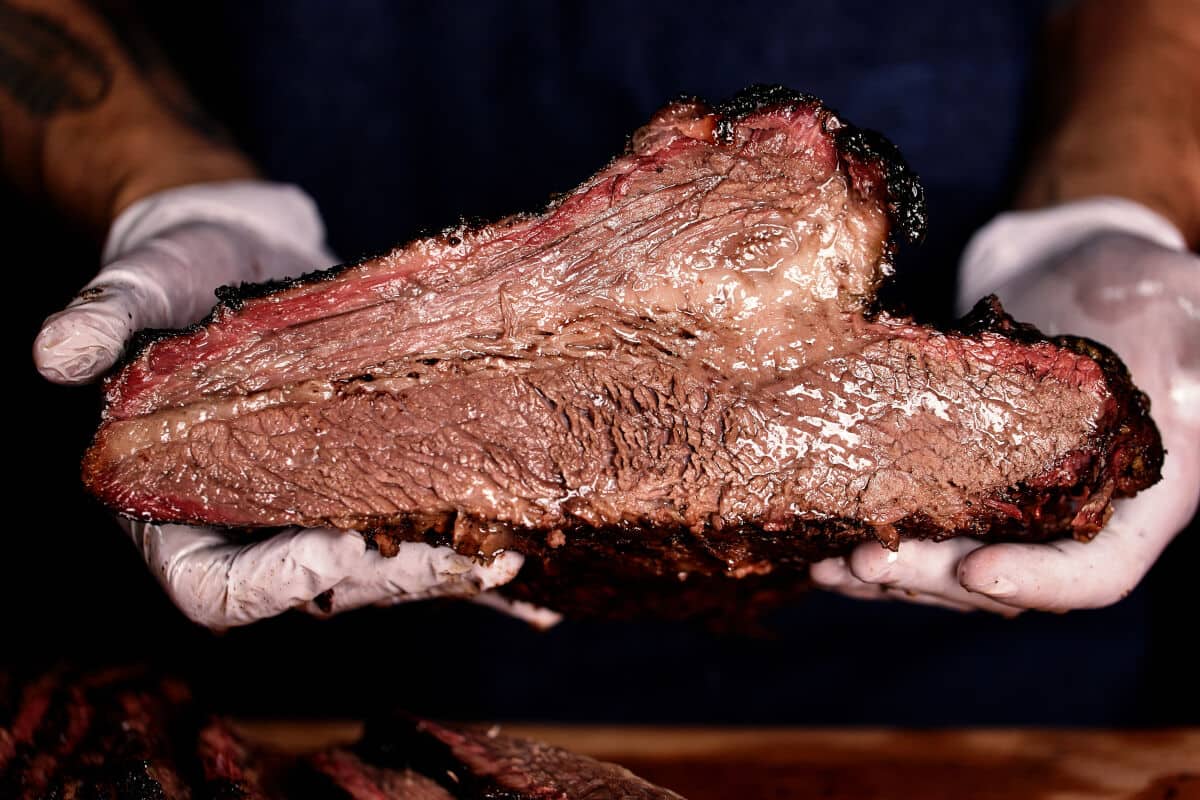
The only way to cook a brisket is low ’n’ slow. How low? Your target range should be 225F to 250F. How slow? That will depend on the size of the cut and other factors. A good estimate is 1 hour per-pound. That means an average brisket could easily take 12 hours to smoke. Be sure to take that into account when you’re planning dinner.
You can use any hardwood you like, really, but the traditional choices are hickory, oak, and mesquite. But, since smoking and experimenting go hand-in-hand, there’s no harm in mixing it up with cherry (the color it gives to bark is gorgeous), apple, or maple. The sweeter, lighter tastes match nicely with similarly flavored rubs.
Once your smoker is up to temperature, place your brisket on the grate with the deckle facing up. Some chefs like to spritz the brisket with fluid on occasion, usually apple cider vinegar.
At some point, you’ll come face to face with “the stall.” We won’t go into too much detail here as we cover it in our article on when to wrap brisket, but it’s an anxiety-inducing period during which the temperature inside the brisket will plateau and stubbornly refuse to climb. It may last for several hours, but it will pass. Many people will remove the brisket and wrap it in foil or butcher paper to help beat the stall.
Once finished to an internal temperature of 195F, remove the brisket from the smoker and let it rest for 2 to 4 hours, depending on size.
Where to Buy Brisket Online
Snake River Farms
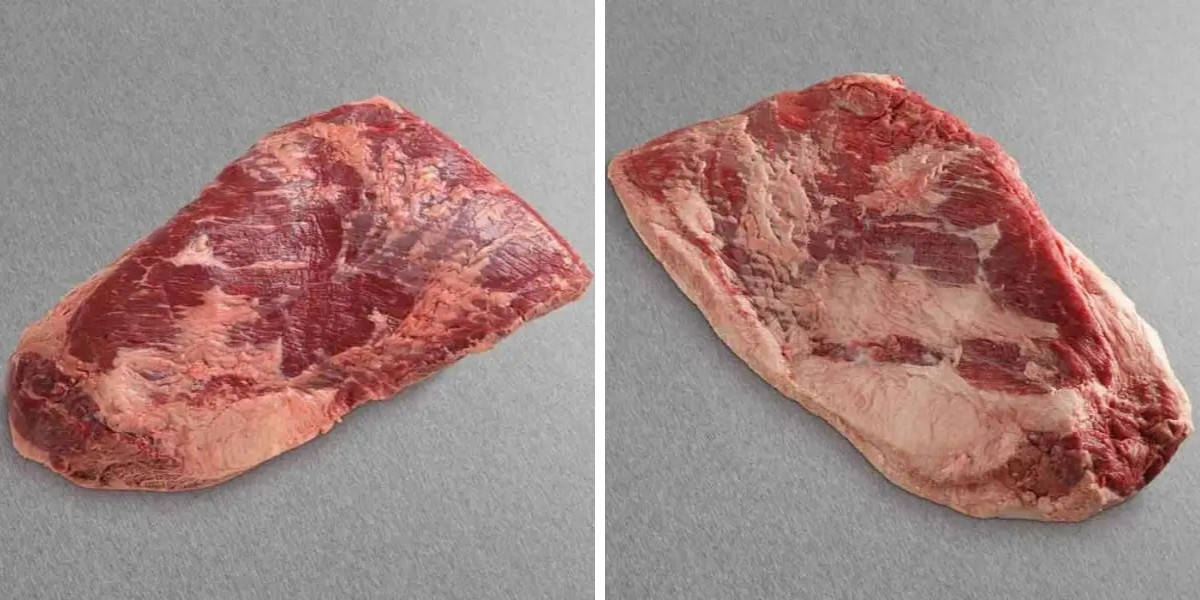
Snake River Farms sells two different grades of brisket:
- American Wagyu Black Grade
- American Wagyu Gold Grade
The black grade briskets have a higher marbling score than USDA Prime. This Wagyu cross beef is farmed in the moderate environment of the Pacific Northwest and creates briskets with naturally rich marbling and outstanding flavor.
The Gold Grade briskets are Snake River Farms’ most premium line, offering even more intramuscular fat and marbling than even their Black Grade range. So you know these will be rich and buttery, with an insane level of deep umami beefy flavor.
Snake River Farms briskets are available in weights from 9-12 lbs, up to 20+ lbs.
Check Price on Snake River Farms
Porter Road
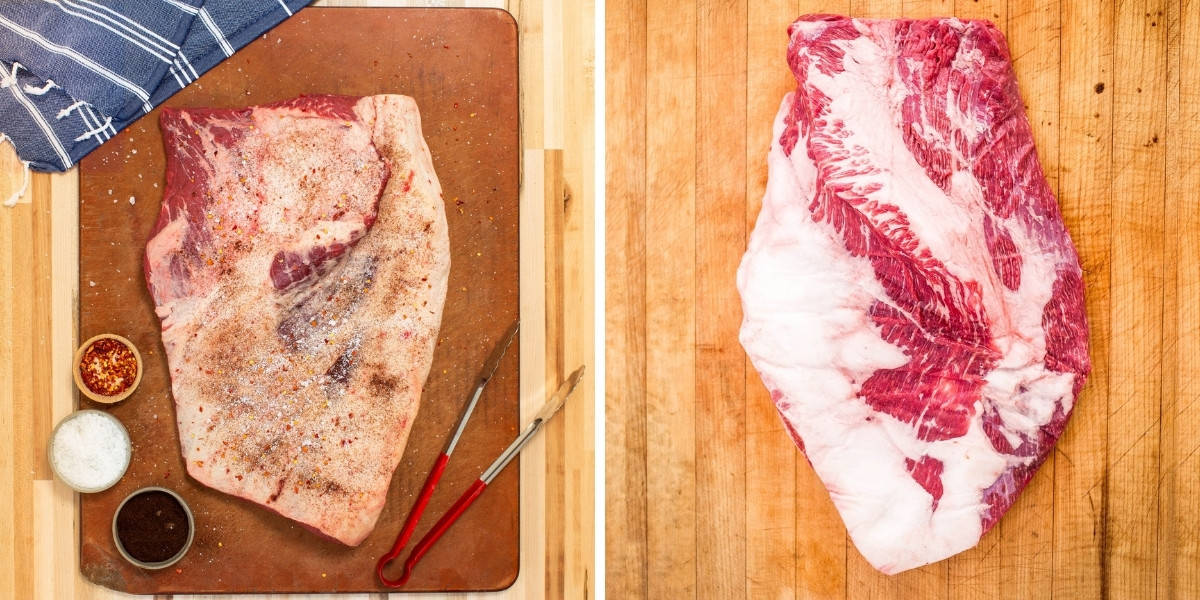
Porter road sells two lines of brisket labeled ‘packer brisket’ and ‘whole brisket.’ The packer brisket comes in at 13.5 to 14.5 lbs, whereas the whole brisket weighs between 8 and 10 lbs. Apart from the weight — and being sourced from different farms — I’m not sure why they are given different names?
Both cuts are wonderfully marbled, intensely flavored, and will be sure to impress. Porter road ships their briskets frozen, top keep them fresh and lock in the flavor.
Final Thoughts
See? Told you it would be epic. Smoking large cuts of beef can be a lot of fun and immensely satisfying — if you know how to do it right. Well, guess what? Now you do. And you’re barbecuing world just got a little bigger, which is never a bad thing. Which one are you going to try first?
I truly appreciate you choosing this as your source for barbecue knowledge; hopefully, all the questions you came seeking answers for have been addressed. If not, drop a line, and I’ll be happy to respond. I’m also happy when you share my articles with your friends and family, and join the community on social media. BBQ is for sharing!
Now, if you came here seeking knowledge on tri-tip and brisket, you likely have other smoking and grilling questions. I invite you to browse the site for a while — you never know what you’ll turn up.
Thanks for reading — now go light that grill!


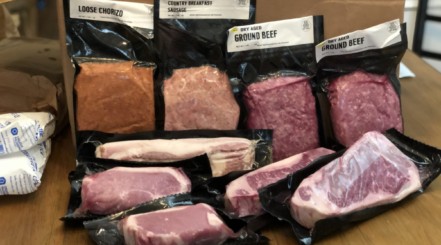
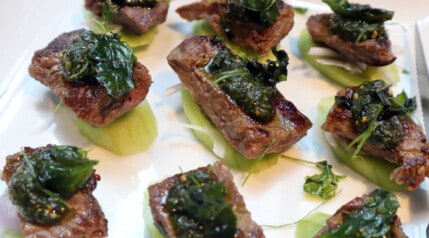
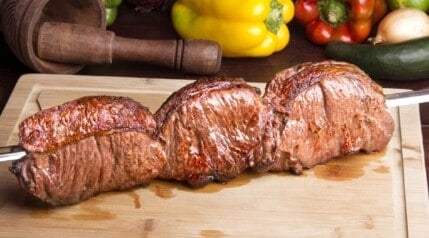
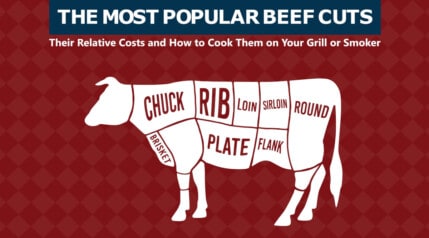
First you probably will want to update the chart at the top of article where it refers to the “location on pig.” So I live in Southern California and I agree that Tri tip is popular. My sister raves it’s the best. I say it’s overrated. I’ve tried it again and again at several well-known restaurants and still haven’t enjoyed it. Apparently I haven’t had it prepared so that it’s tenderly delicious. Just this week I had it again from a well-known restaurant (just two letters in its name) and another disappointment. Why would I buy it if it’s not impressive when cooked by a professional chef. Your article was informative. I wanted to know about tri tip and brisket (corn beef); since the meats texture looked very similar once cooked, I wondered if they were from the same cut of beef. Now I know. I really enjoy corn beef so excuse me now, I’m preparing it now for St Patty’s Day meal. Thank you.
“First you probably will want to update the chart at the top of article where it refers to the “location on pig.” – Well that’s embarrassing! I just fixed it now, thank you.
What is it you don’t like about tri-tip? Texture? Flavor? I’ve had it many times and love it. I always try to vary the cuts I eat, and all have pluses and minuses, characteristics better or worse than other cuts. I just look for the positives while enjoying variety.
Oh, my! You’ve certainly covered the bases on this topic. Thanks to this, I’m ready to tackle my first brisket. Could you please share a few tips on the best way to carve these two cuts? I see so many different techniques, especially on tritip, that I’m not sure of the best method.
Also, do you have any hints on smoking with a pellet grill, type of pellet, and temp? Thanks.
Hi, Craig. We do cover all of these things. If you use the search function found in the main menu above, enter ‘brisket’ and then ‘tri tip’, you will find articles on carving them in the first few results. The same with pellet grills. I hope this helps!